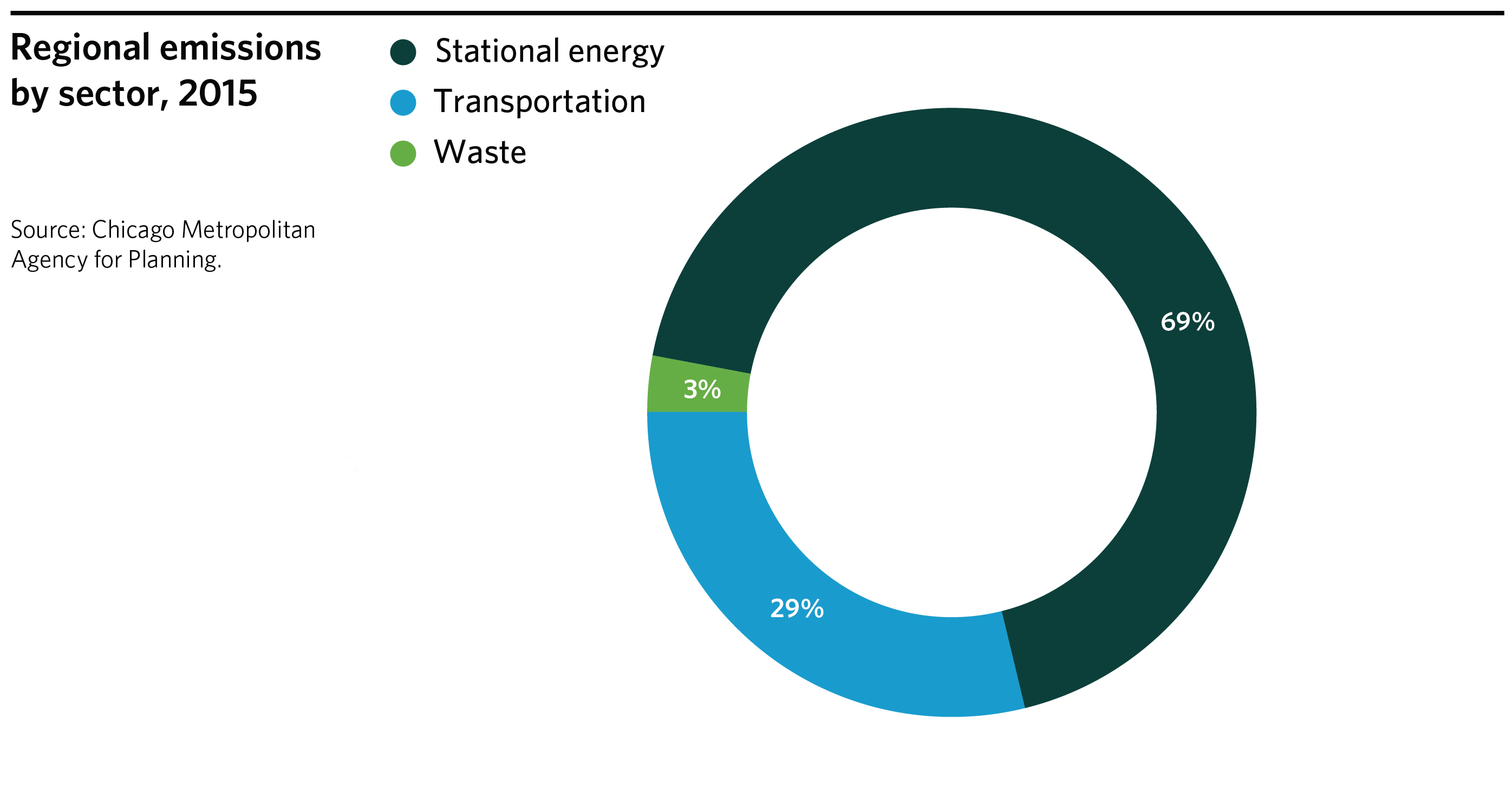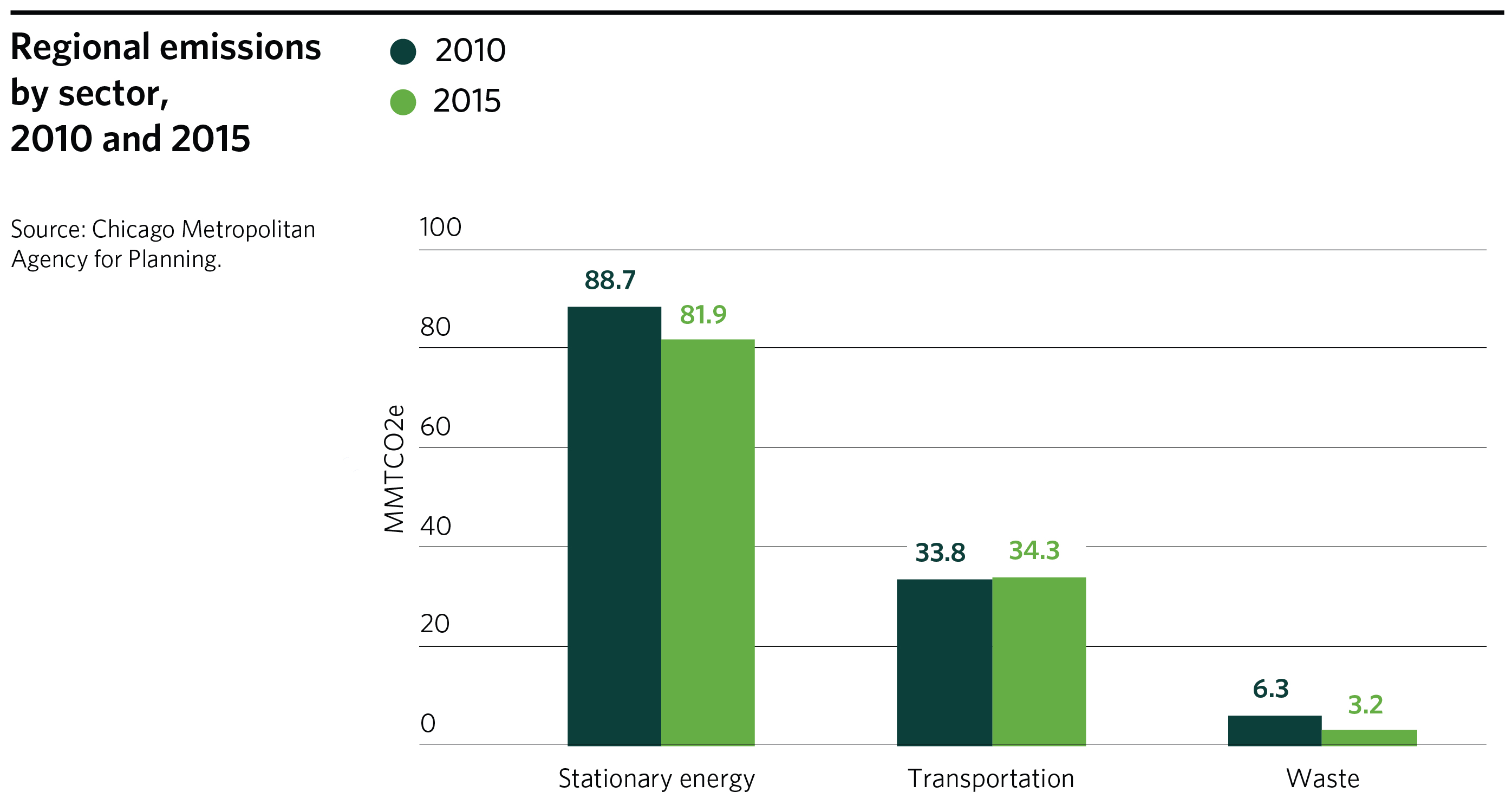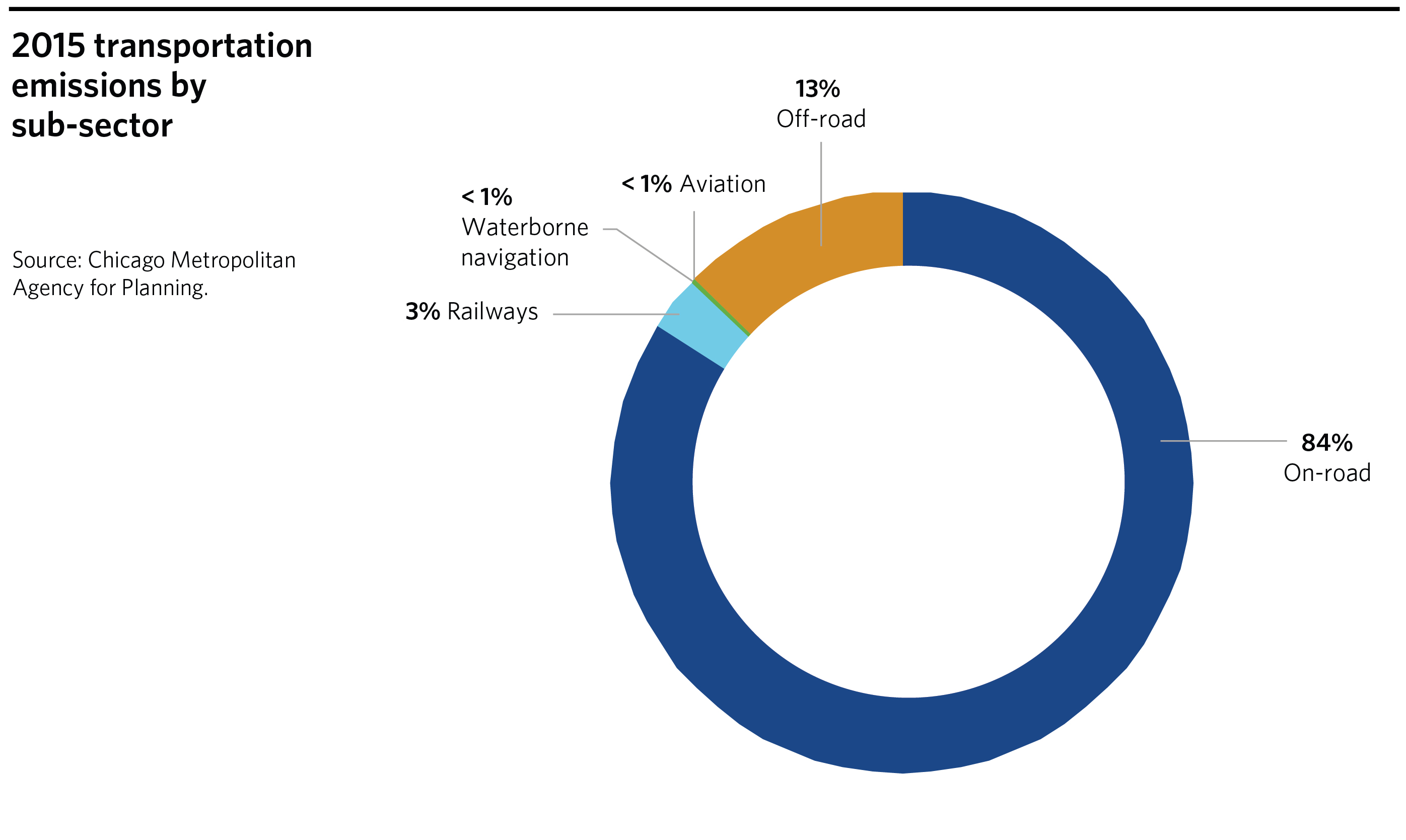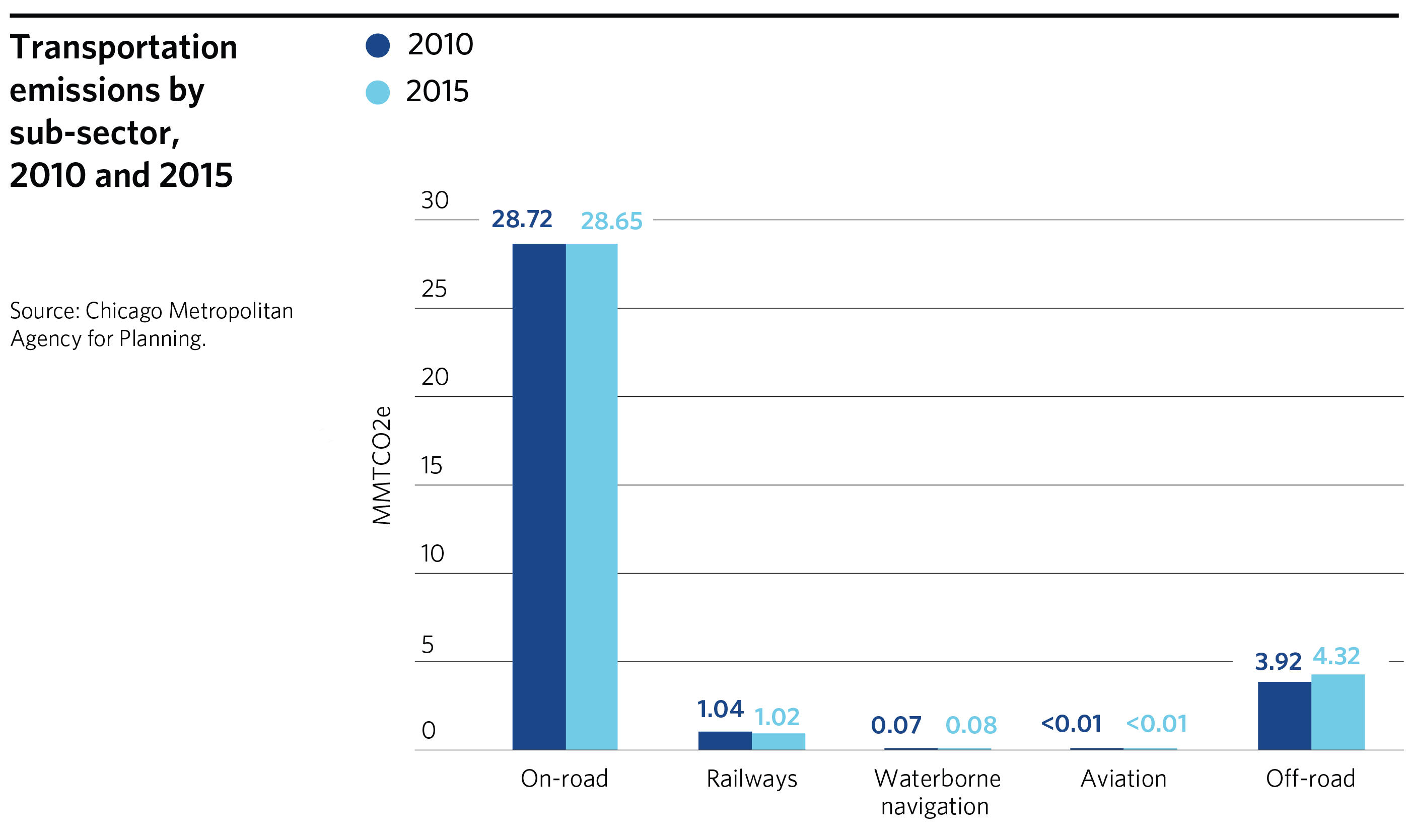The coronavirus pandemic has radically altered our lives. However, some of the recent changes may help to mitigate causes of climate change: fewer miles being driven by cars and trucks, less time spent idling on congested roads, and reduced pollution emitted by diesel- and gasoline-powered vehicles. Carbon emissions from these vehicles, and fossil fuel burning generally, contribute to climate change. Other pollutants cause and aggravate respiratory problems, most acutely within communities that already experience significant health issues.
ON TO 2050 recommends that the region intensify climate mitigation efforts -- that is, take action to reduce the amount of carbon in the atmosphere. CMAP also recommends strengthening the regional economy, reducing congestion, and directing more resources toward protecting our most vulnerable communities. The link between the movement of goods and people and economic health is well established. However, costs and consequences are also associated with our most prevalent forms of mobility.
There is little debate about the connection between burning fossil fuels to power our economy, the resulting air pollution, and impacts to public health. Despite vast improvement in air quality -- approximately 70 percent less pollution compared to 1970[1] -- air pollution continues to plague public health, contributing to millions of deaths per year.[2] The compounded health impacts on disadvantaged communities[3] most impacted by air pollution have been laid bare as communities experiencing elevated health problems are far more likely to be impacted by COVID-19. Beyond the current, acute pandemic crisis, new evidence shows that climate change is contributing to “more days with dangerously high levels of ozone and particulate matter.”
Nationwide, transportation now accounts for more greenhouse gas emissions than electricity generation or natural gas consumption, making it the largest single source of planet-warming gases. In the Chicago region, surface transportation accounts for roughly 29 percent of all emissions, which increased slightly between 2010 and 2015, although on-road emissions remained relatively flat. If this trend continues, the region will fall far short of the reductions needed to avoid the worst impacts of a changing climate.




Around the world, air quality in major cities improved in March and April as carbon dioxide, nitrogen oxides, particulate matter, and ozone formation fell due to stay-at-home orders. Chicago region planners and transportation experts have expressed curiosity about how the recent drop in transportation volumes has affected air quality and emissions in our region. Did the region experience the same drop as other major cities? Without reliable empirical data, CMAP turned to its vehicle emissions model to estimate the change in emissions during the period from March to April, comparing a typical travel day to a “reduced” travel day. The results indicate significant reductions in a variety of metrics and pollutants.
|
Metric |
Percent Change |
|
Daily Vehicle Miles Traveled |
- 43% |
|
Daily Greenhouse Gas Equivalents |
- 35% |
|
Daily Nitrous Oxides |
- 20% |
|
Daily Particulate Matter |
- 31% |
|
Daily Volatile Organic Compounds |
- 38% |
A 35 percent reduction in transportation GHG emissions is notable. However, to achieve emissions goals set out in ON TO 2050, the region must reduce its overall carbon emissions by 80 percent from 1990 levels by the year 2050. Thus, a much greater reduction in emissions from the transportation sector will be required, but a pandemic and a flattened economy are no way to get there. Fortunately, there are other ways, and CMAP is working with regional and local partners to put these in motion.
Perhaps more informative and interesting is to consider the longer-term effects of reduced emissions. Could we transition more permanently into flexible and remote work environments? Will we find it necessary to travel by car to meet in person or to sit at a desk with the same functionality as many of our home offices? How many lives could be saved or improved through better air quality?
As the region begins the uphill climb to economic recovery, we should contemplate the lessons learned. We believe that it is possible for a portion of the workforce to commute less by car while maintaining productivity. COVID-19 has proven that massive collective action and mobilization, or in this case demobilization, is possible when the consequences are dire. The risks of climate change are no less dire, but they are distant and difficult for most people to relate to. The way out of the pandemic-induced recession could be the same path that leads us out of the climate crisis. An opportunity to take major steps toward a clean and healthy future is here.
[1] The Clean Air Act of 1970 established the modern air quality regulatory framework.
[2] Also see information from the Global Change Data Lab.
[3] CMAP has identified these Economically Disconnected Areas for the Chicago region: https://www.cmap.illinois.gov/2050/community/disinvested-areas